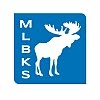The two main methods for posting client disbursements are.
- Post any and all disbursements to a catch-all client disbursement expense account.
- Post expenses to category accounts.
When using the second method, you set up your expense accounts and add corresponding expense recovery account. You post (no matter number) the expenses paid by general account entries to Postage Expense, Courier Expense, Court Filings Expense, Process Serving Expense, etc. Immediately do an Expense Recovery for the appropriate matter(s), for the same amount, and post to Postage Recovery, Courier Recovery, Court Filings Recovery, Process Serving Recovery, etc.
Using the first method makes it difficult to track the disbursements, and ensure your costs are being fully recovered. Writing a cheque to pay a vendor, without first entering a matter number, is a very common error. You promise yourself that you will return to the cheque entry, to enter the matter, by forget to do so.
Using the second method, you can compare the dedicated Expense accounts to the Recovery accounts, and it will be obvious if some items are missing.
A variation of the second method is to post both the expense and the expense recovery to the same category account (e.g. Courier Expense). At the end of the month/year, the account should have a zero balance, if you indeed passed on all of the disbursement costs. If not zero, you should be able to quickly identify the missing entry and bill the client.
As always, I invite your comments and suggestions for future post topics. Next week – PCLaw versus Cloud bookkeeping.
Clyde

No comments:
Post a Comment
I welcome any comments or feedback.
Do you have a question? Do you have a topic for a future article?